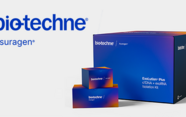To Screen or Not to Screen?
Is childhood lipid disorder screening worthwhile? In the wake of updated guidelines, some argue that the benefits are worth the costs and risks – but others disagree
Money is always a hot topic in healthcare – where it’s going, why it’s being spent, and how we can get more value out of each cent. Indeed, diseases are often referred to by their economic burdens, and it is by regulators’ weighting of cost benefit versus quality-of-life gains that therapeutics and diagnostic solutions are often assessed. Sometimes, not to intervene is deemed the favorable solution – and it is this strategy that has recently been suggested for the screening of lipid disorders in children.
After nine years, the United States Preventive Services Task Force (USPSTF) has updated its guidelines on screening for lipid disorders in people under 20. The screening received an I statement, meaning that “current evidence is insufficient to assess the balance of benefits and harms of screening (1)” – but not everyone agrees. Earlier recommendations from the National Heart, Lung, and Blood Institute (NHLBI) were strongly in favor of screening “unless a clear and compelling rationale for an alternative approach is present. (2)”
Is there such a rationale? The authors of a recent JAMA Internal Medicine editorial believe so (3). They argue that screening for low-likelihood issues like cardiovascular disease events in children results in costs and harms without accompanying benefit – especially if they receive treatments like statin drugs, which can increase the risk of diabetes mellitus. Furthermore, they add that if the USPSTF had considered the cost-effectiveness of screening in its evaluation, the outcome would most likely have been a grade of D: “Discourage the use of this service.” It seems that an uncertain future is ahead for childhood lipid screening…
- US Preventive Services Task Force et al., “Screening for lipid disorders in children and adolescents: US Preventive Services Task Force Recommendation Statement”, JAMA, 316, 625–633 (2016). PMID: 27532917.
- National Heart, Lung, and Blood Institute, “Expert panel on integrated guidelines for cardiovascular health and risk reduction in children and adolescents: summary report”, Pediatrics, Suppl 5, S213–S256 (2011). PMID: 22084329.
- TB Newman et al., “Lipid screening in children: low-value care”, JAMA Intern Med, [Epub ahead of print] (2016). PMID: 27533131.

While obtaining degrees in biology from the University of Alberta and biochemistry from Penn State College of Medicine, I worked as a freelance science and medical writer. I was able to hone my skills in research, presentation and scientific writing by assembling grants and journal articles, speaking at international conferences, and consulting on topics ranging from medical education to comic book science. As much as I’ve enjoyed designing new bacteria and plausible superheroes, though, I’m more pleased than ever to be at Texere, using my writing and editing skills to create great content for a professional audience.




















